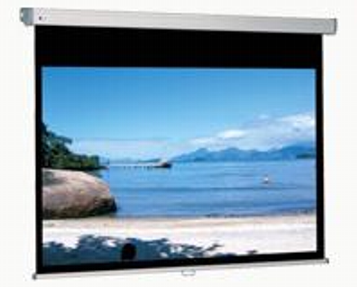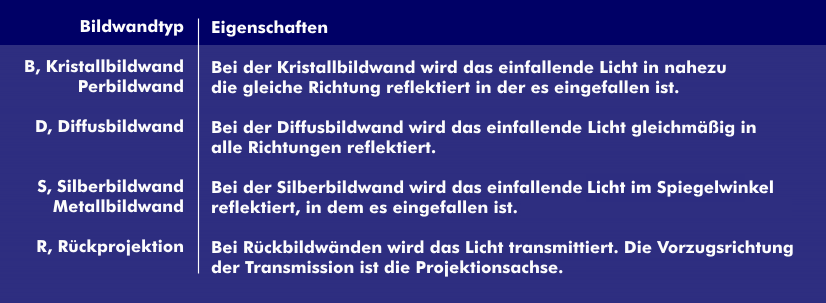projection screen
A projection screen is a white or white-toned surface that reflects light in the case of front projection or transmits light partially transparently in the case of rear projection. It can be a solid, straight or parabolically curved surface on which projected images are reflected with as little distortion and light as possible.
A projection or image screen can be made of film or fabric, coated special material or fiberglass-reinforced fabric. It should have a smooth, highly reflective surface that is not wavy. Such projection screens or screens are used at trade fairs, seminars and congresses, but also in the private sector in the home theater.
The quality and the surface structure of the projection screen are decisive for the light reflection with which an image projected by a projector onto the projection screen is reflected. The quality of a projection surface is expressed as a gain factor. It is the factor that indicates the ratio of projected to reflected light. The gain factor or luminance factor refers to a flat projection surface in standard white. For parabolic screens, the gain factor changes across the projection surface because the reflected light is brighter in the hot spot.
To obtain a flat projection surface, it can be tensioned by weights or tensioning frames. The projection screen surface is often made of vinyl film and fiberglass and has total reflection when viewed at an angle. There are many facets to the design in terms of projection in bright or darkened rooms as well as the possible viewing angle. Likewise on the mechanical designs and the way of control. A motorized screen for home cinema can be equipped with an Ethernet connection and can be lowered into the ceiling or floor by means of a remote control.
The German Institute for Standardization e.V.(DIN) has classified the various projection screens into reflective, transmitting and diffuse screen types in DIN 19045-4 entitled "Projection of still and moving images" and divided them into different screen types. Then there are the diffuse screen, the crystal or pearl screen, the metal or silver screen, and the rear projection screen. With the different types of screen, you can adapt the projection technology to the spatial conditions, the size of the room and the seating arrangement of the viewers.


